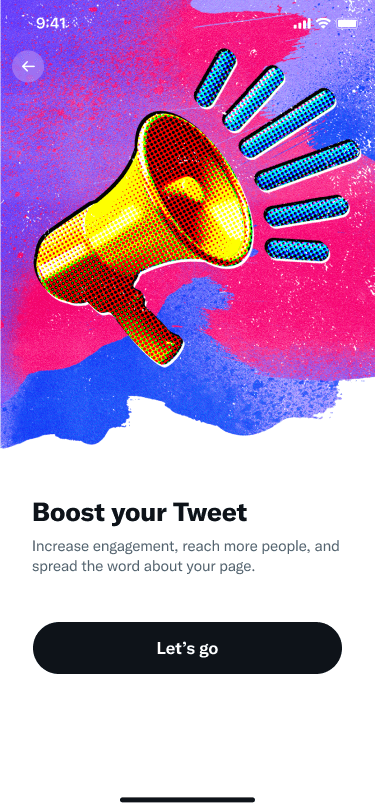Overview
Quick Promote should have been Twitter's secret weapon for SMB advertising. It was the simplest possible path to paid promotion: find a Tweet that's performing well, click a button, pay to amplify it. No campaign structures, no complex targeting, no advertising expertise required. Just boost what's already working.
But by 2021, the product had been neglected into irrelevance. Years of deprioritization left Quick Promote with poor discoverability, a clunky experience, and dwindling revenue. Most Twitter users didn't even know it existed. As Director of Advertiser Experience Design, I knew we could do better. Rather than just building something new, we'd transform what was already there into the strategic gateway it should have always been.
Background
Quick Promote launched in 2015 as a simple proposition: professional customers could pay to boost impressions of their existing Tweets without navigating Twitter's full advertising platform. The product served newer customers with limited digital advertising knowledge, providing a lower barrier to entry compared to traditional campaign creation workflows.
Between 2016 and 2022, Twitter's advertising business concentrated on its most valuable accounts—the top 20% of advertisers that generated the majority of revenue. These large brands and agencies worked directly with Twitter's customer teams and required sophisticated tools with extensive control. Quick Promote fell outside this focus, receiving only maintenance with no feature, performance, or usability improvements.
The product's discoverability suffered particularly. Customers could only find Quick Promote after navigating to Tweet Analytics, a surface few professional users regularly visited. Usage and revenue declined.
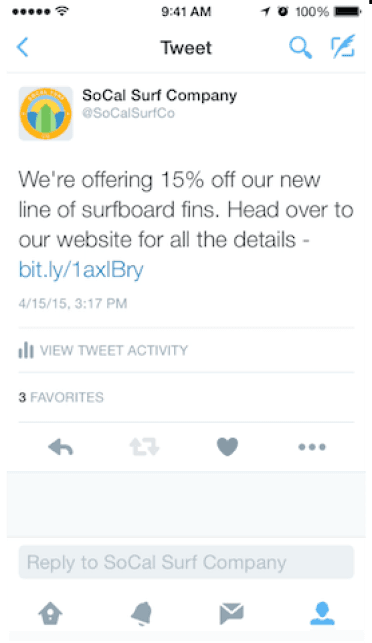
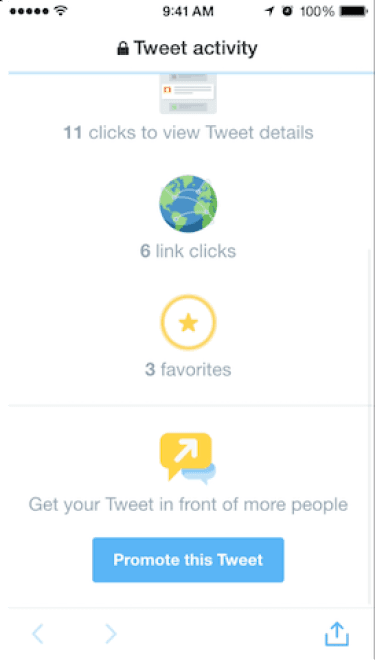
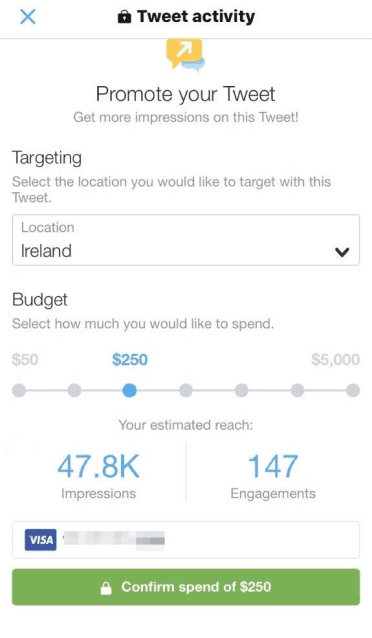
In late 2020, Twitter formed a cross-functional team to diversify revenue sources beyond its traditional advertiser base. As this team successfully identified and grew professional accounts on the platform, improving their entry point to digital advertising became the logical next priority. In 2021, Twitter began reinvesting in Quick Promote, focusing on performance optimization, technical modernization, reduced campaign costs, expanded goals, and additional targeting controls.
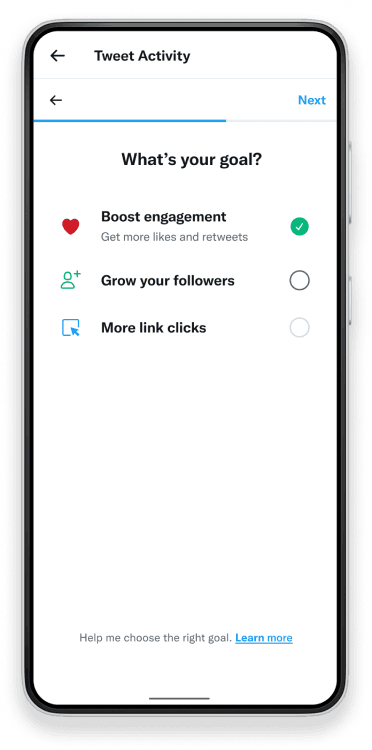
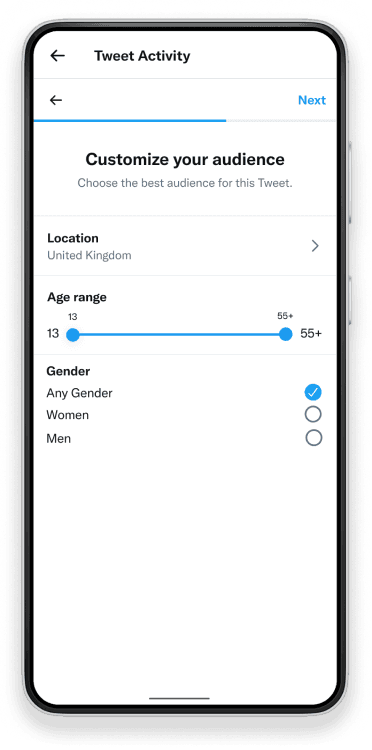

While these improvements progressed, Apple notified Twitter that Quick Promote potentially violated App Store policies. To keep the iOS application available, Twitter removed Quick Promote from iOS until the team could rebuild the product to align with Apple's requirements.
In autumn 2021, following my work on the Advertiser Experience Vision project, leadership moved SMB advertising design efforts into my organization. Simple Ads became my responsibility first, with Quick Promote following in early 2022.
Challenges
-
Broad customer segment with limited insights. The SMB segment encompassed diverse businesses and needs, but Twitter had conducted minimal research. Internal assumptions about customer requirements often substituted for validated understanding.
-
App Store policy compliance. Relaunching Quick Promote on iOS required fundamental workflow changes to meet Apple's guidelines, particularly around in-app purchases and how the product positioned itself.
-
Low adoption and high churn. Years of neglect had resulted in poor product quality, minimal discoverability, and high customer abandonment. The product no longer served its intended purpose.
-
Balancing immediate needs with long-term value. The team needed to increase revenue while simultaneously setting customers up for continued success. Not just one-time transactions that would ultimately cannibalize existing advertiser spending.
Approach
With Quick Promote now under my leadership, I established a paired design structure within the Ads Design team. Two designers focused on complementary SMB initiatives—Simple Ads and Quick Promote—with clear expectations for collaboration and shared principles:
Become segment experts. Each designer had deep customer understanding for their product, learning everything possible about customer needs and industry approaches to inform cross-functional partners.
Focus on growth and lifetime value. Instead of optimizing solely for acquisition, the goal was to set new customers up for success and educate them to become more advanced advertisers who could unlock larger budgets over time.
Leverage the existing platform. Instead of building parallel systems, we focused on training customers through content design and streamlined workflows that reduced choices and set smart defaults. We saved custom components for situations where they provided distinct advantages.
Define clear boundaries. We worked with product partners to define what Quick Promote should and shouldn't be, ensuring we optimized within a focused feature set rather than creating another advanced workflow.
Think end-to-end. Customer success extended beyond ad creation, so designers represented their customers' needs across the entire journey, participating in reviews and providing feedback to adjacent teams.
Beyond building alignment within the design team, I invested significant time with VPs, Directors, and managers across Product, Engineering, and Research. The goal was getting everyone rowing in the same direction. I worked particularly closely with Research to tighten how we identified the most valuable market opportunities within this broad customer segment.
The Quick Promote design effort was led by a Product Designer based in London (who was promoted during the initiative). I invested time understanding what had informed previous priorities and decisions, coaching toward a product perspective aligned with our goals. One critical focus: how we would increase Quick Promote's revenue contributions without constantly introducing new features that might overcomplicate the experience for target customers.
The effort concentrated on growing the customer base by improving experience quality and identifying workflows most likely to set customers up for success. We also needed to define a product experience compliant with App Store guidelines. I identified a significant opportunity to increase discoverability by introducing Quick Promote within the Tweet creation process rather than only on the published side.
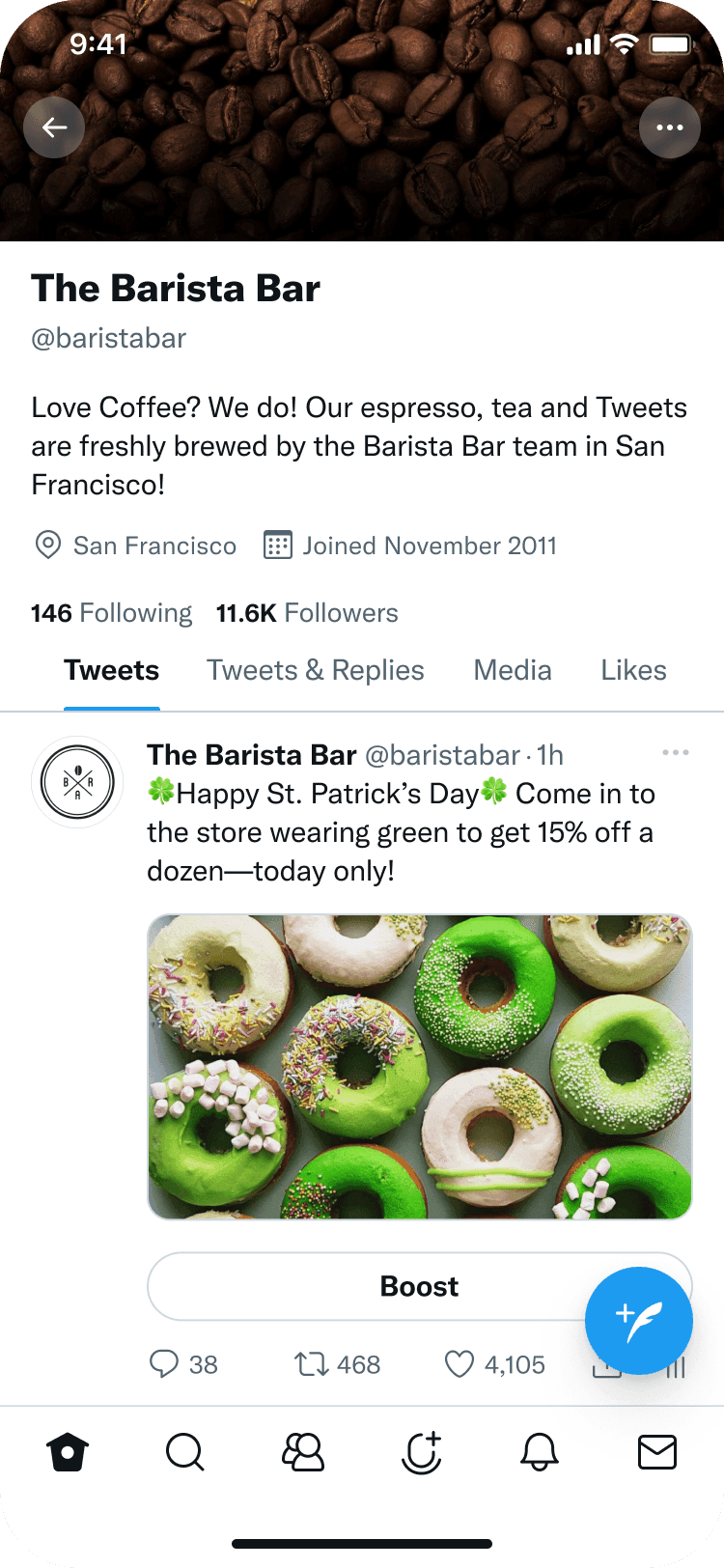
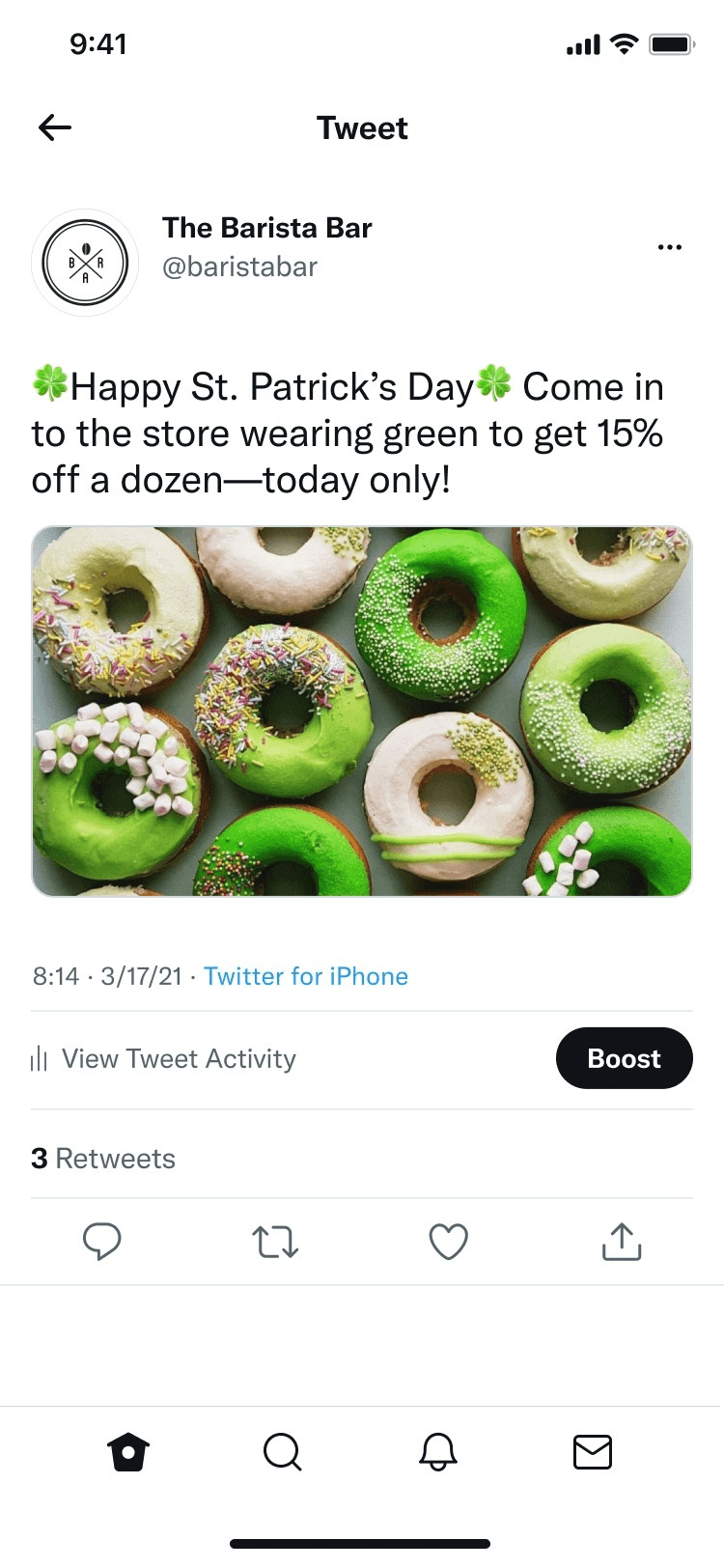
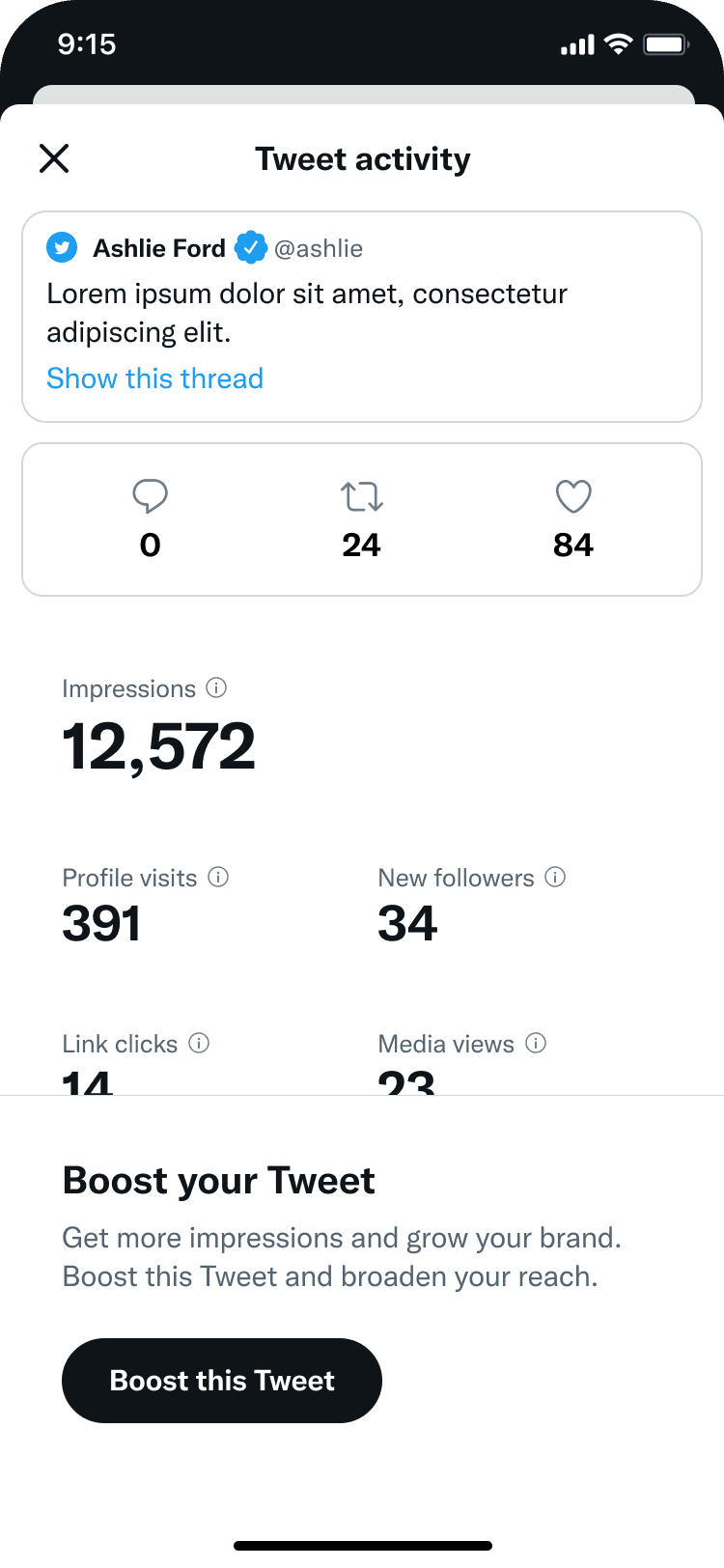
Delivery
Throughout 2022, the team focused on improving the responsive web experience (used by twitter.com and Twitter's Android app) while relaunching Quick Promote as a native mobile experience on iOS. The team explored solutions through prototypes, validated them through research, and prioritized changes accordingly. Product requirements for the native iOS experience were proposed and evaluated against policy requirements.
Impactful changes to Quick Promote included:
Enhanced visual design added custom illustrations and refined polish to make the overall experience more delightful and approachable for newer advertisers. Every screen was redesigned with careful attention to hierarchy, color, and white space.
Improved discoverability implemented promote buttons directly on published Tweets instead of requiring customers to navigate to Tweet Analytics—a critical change that dramatically increased product visibility.
Contextual goal selection provided more information to inform new customers, reduce decision complexity, and set them up for success based on their actual objectives. The interface balanced clarity with visual interest through thoughtful use of iconography and progressive disclosure.
Refined targeting interface improved the aesthetic layout across all platforms and the touch experience on native iOS, with deliberate friction introduced for some controls to encourage optimal campaign setup.
Consistent budget and pricing interactions created a more cohesive end-to-end experience across the workflow, with careful attention to transitions, loading states, and error handling.
For the iOS relaunch, the team made specific changes to meet App Store requirements:
Repositioned as "boost" with all advertising references removed. Buttons throughout the experience changed from "promote" to "boost."
Removed goal selection since the product focused solely on boosting impressions and engagements under the new positioning.
Offered pricing packages instead of traditional campaign budget controls, simplifying the decision for customers.
Integrated in-app payments replaced credit card purchases to comply with App Store policies.
When the improved Quick Promote was relaunched on iOS in mid-2022, Design had already explored solutions for future milestones. These included coupon workflows for enticing new and returning customers, as well as integrating Quick Promote into the Tweet creation flow to unlock boosting for recent Twitter initiatives, including Spaces and commerce.
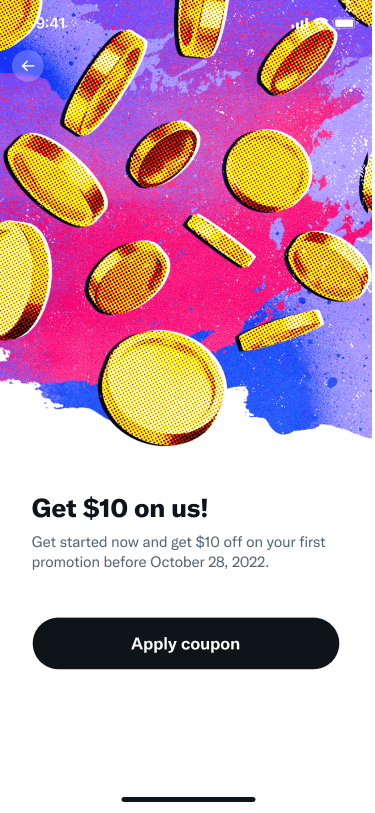
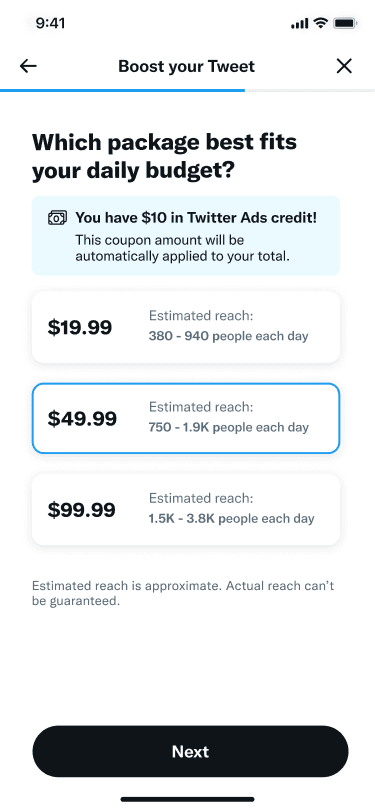
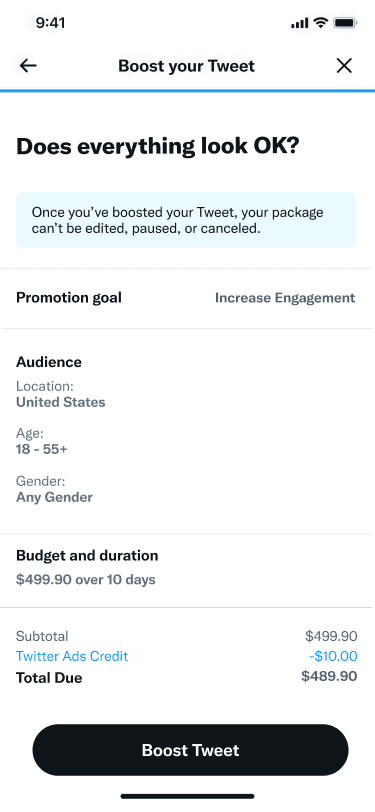
Results
Throughout the second half of 2022, Quick Promote demonstrated substantial performance improvements:
Takeaways
Significant opportunity remained for Quick Promote as a product, but the 2022 effort provided valuable lessons:
Experience quality drives growth. Focusing on customer experience rather than feature expansion provided more valuable insights and delivered stronger business results than adding complexity.
Strategic exploration enables influence. Partnering with the cross-functional team to execute immediate priorities while exploring future opportunities allowed Design to influence strategy and inform 2023 roadmaps.
Prosumer use cases create platform value. While the product primarily focused on revenue growth, the work raised interesting questions about how prosumer advertising could benefit consumer engagement metrics when customers pay to promote content within Twitter's core experience.
